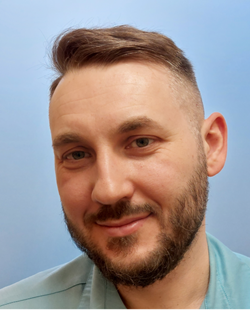ESTRO 2024 Congress report
The medical physics in brachytherapy track at the ESTRO 24 annual meeting began with two teaching lectures on the commissioning of treatment planning systems (TPSs), named 'What every medical physicist should know about commissioning TG-43’ and ‘Model-based treatment planning systems in brachytherapy'. Marisol De Brabandere and Javier Vijande addressed the key issues in TPS verification for brachytherapy in their very interesting lectures.
At high noon on the second day of the conference, Ioannis Androulakis, in the breast and prostate brachytherapy proffered papers session, presented the results of a study on the uncertainty of applicator reconstruction through the use of transrectal ultrasound in prostate brachytherapy. Anyone who has reconstructed ultrasound-imaged needles knows how demanding this endeavour is, and the electromagnetic tracking solution that was presented can improve the accuracy of catheter positioning.
On a typically Scottish rainy Sunday morning, we began with a session on the impact of the EU Medical Device Regulation Directive on radiotherapy work. Inger-Karine Kolkman-Deurloo presented the possibility of introducing new technologies under the new law using her own experience at Erasmus University Medical Center as an example. We continued with a sensational session on advances in brachytherapy physics. Hot topics for any brachytherapy physicist were covered: in-vivo dosimetry, the use of artificial intelligence (AI) in treatment planning and optimisation of dose distributions, and the use of 3D printing to modify gynaecological applicators.
In the afternoon, a symposium entitled 'What’s new in AI developments and automation in brachytherapy' took place. The lecturers covered up-to-the-minute topics regarding the use of ChatGPT as a support for professionals in communication with the patient, as well as a support with the clinical decision-making process. Other lectures in this session dealt with ways to accelerate the contouring and treatment-planning processes through the use of AI-based tools.
Sunday ended with a proffered papers session on physics brachytherapy. The first to present a paper was ESTRO-Elekta Brachytherapy Award winner Teun van Wagenberg, with a presentation on time-resolved analytics of clinical dose metrics for high-dose-rate (HDR) brachytherapy error detection. The approach presented made it possible to estimate the potential difference in the deposited dose relative to the planned dose during the patient's irradiation. The next three studies dealt with the use of information technology solutions to accelerate contouring, treatment planning, and optimisation of dose distributions. Then we were able to hear about new services for the measurement of radioactive sources through photon fluence determination. The last lecture was about the use of radiopaque materials for 3D printing of applicators with dose collimation capability for ophthalmic brachytherapy.
On Monday morning, a mini-oral brachytherapy session took place in which the principles of the dosimetry audit that had been conducted under the auspices of the International Atomic Energy Agency and the World Health Organization were discussed. A compact measurement phantom and the first measurement results for HDR brachytherapy that had been performed with it were displayed. The poster discussion session on brachytherapy similarly addressed aspects of the use of AI in brachytherapy as well as 3D printing.
Nearly two dozen posters that dealt only with physics in brachytherapy were accepted for the congress, each addressing important issues in various areas of dosimetry, treatment planning, or new technological developments. I encourage you to revisit the most interesting sessions on the congress website or app.
The ESTRO congress was, as always, an amazing opportunity to learn about brachytherapy innovations and to expand your knowledge, which can translate into quality work and an improved ability to help patients. The opportunity to meet leading researchers and to talk to them about your concerns in daily work is priceless.
Grzegorz Bielęda

Medical Physics Department
Greater Poland Cancer Centre
Poznań, Poland